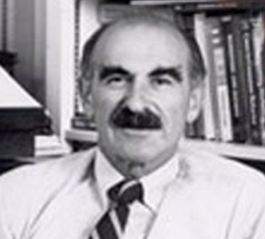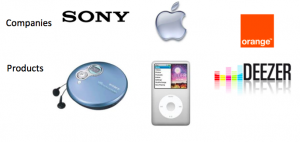
Theodore Levitt, a professor at Harvard Business School, once said in 1962: “people don’t want a quarter inch drill, they want a quarter inch hole”. In other words, if you’re trying to innovate you could do one of 2 things :
- you could study the quarter inch drill and wonder: “how can I make a better quarter inch drill?” This leads product-centric innovation
- you could go out study the process of creating a quarter inch hole. This is product agnostic. This leads to process innovation. And it may lead to something that displaces the drill
I/ Innovation starts with a choice
In other words, you have two options here: study the product or study the process, that is the job that people are trying to get done. And this is a critical choice.
II/ We tend to prefer product innovation over its seemingly more elusive alternative
- We have a tendency to focus on product innovation, for many reasons, including:
- We like working on existing products. It provides a sense of security
- We’ve developed the skills and assets to improve existing products
- We know there’s a market for existing products and so we’re led to believe there will be a market for an even better product
- Plus, we’ve built a business around existing products: suppliers, channels, business models, clients… We know there’s money. We know there’re profits.
III/ We fail to understand consumers needs
But sometimes, in our propensity to work in all-too-familiar product environments, we make a fundamental mistake. We equate a product with a need, as Tony Ulwick shows in an entitled “Giving Customers a Faire Hearding“. And this leads us to believing falsities, such as:
- “consumers need iPhones”
- “consumers need Microwaves”
- “consumers need cars”
But the reality is that:
- Consumers don’t need iPhones. Rather, they need to communicate with people long distance
- Consumers don’t need Microwaves. Rather, they need to cook their food
- Consumers don’t need cars. Rather, they need to get from point A to point B

In other words, what people need are not products as such. What they need is something that helps them get a job done.
Consumers need something that will enable them cook their food. This could be a microwave, but it could also be an oven or anything else that enables cooking food. As consumers are cooking their food, they are trying to:
- minimize likelihood that the food burns
- minimize likelihood that the food is undercooked
In other words, consumers refer to measures that are indicative of
- what they are trying to accomplish
- how they decide to choose one product or one solution over another
IV/ The real meaning of consumer needs
In other words, needs are NOT products. Needs are the criteria that consumers use in order to evaluate how happy they are in getting a job done. For example, if one is trying to listen to music, one could imagine that consumers are trying to
- Minimize the time it takes to determine what songs to listen to
- Minimize the time it takes to father the songs
- Minimize the time it takes to determine the lyrics of a song
- …
These were needs related to music 20-years ago, 30-years ago, there are needs today, and they will be the needs to listen to music 5 years from now or 10 years from now. This is what consumers are trying to do when they are listening to music. Now, the CD player, the iPod, and Deezer are different means to accomplish the job of listening to music. And consumers will choose one product over another based on a satisfaction criteria which is based on above-mentioned metrics.
This may sound obvious, but consider this.
V/ Product innovation is a dead-end

The CD player, the iPod and Deezer are different products. They’re manufactured by different companies, which are using different suppliers, which develop different assets are part of different value networks.
Plus, each product corresponds with a specific industry era.

- Sony dominated the CD player era
- Apple dominated the iPod era
- Orange is dominating Deezer ear
VI/ Innovation focused on the Job-To-Be-Done works
The point I’m trying to make is this: innovation cannot be product-based.
- Sony can improve a CD player and include all sorts of innovations, but this will never produce the iPod
- Apple can add all sort of innovations to its iPod, but these product-centric innovations will never create Deezer
- Orange is probably bringing all sorts of innovations to Deezer, but these will never create the new product paradigm which will replace streaming music
In other words, innovation must be focused on the job of listening to music, not the product. Innovation must improve the job of listening to music. This will lead to creating new product paradigms.
To sum up, product innovation doesn’t create a sustainable competitive advantage because:
- product innovation is focused on… the product, not consumer need as such
- leading companies (Sony, Apple) that have performed product innovation eventually lost their leading position because they failed to anticipate changes in product paradigm
- product innovation fails to alter industry structure
Thus, in order to sustain any competitive advantage, companies must develop innovations that make it easier for consumers to get their job done.
Further readings:
- For an article on the definition of a need, please refer to Anthony Ulwick’s article published in the MIT Sloan Management Review, here
- For another discussion on the Jobs-To-Be-Done innovation, please refer to Anthony’s Ulwick’s blog, here
- For yet another presentation of the Jobs-To-Be-Done innovation practice, please refer here
[…] For a read on why product innovation doesn’t create a sustainable competitive advantage, read this. […]
[…] detta citat från Harvardekonomen Theodore Levitt argumenterar innovationsbloggarenGuillaume Villon de Benveniste för att det är mer framgångsrikt att satsa påprocessinnovation än […]
i totally agree that
1. product innovation doesn’t create a sustainable competitive advantage;
2. companies must develop innovations that make it easier for consumers to get their job done.
3. the problem is that how an organization can be so designed that all units/functions/employees are consumers’ needs oriented, all of them are innovation driven and to the right direction especially for a big company, say, with 20,000 employees with global exposure.